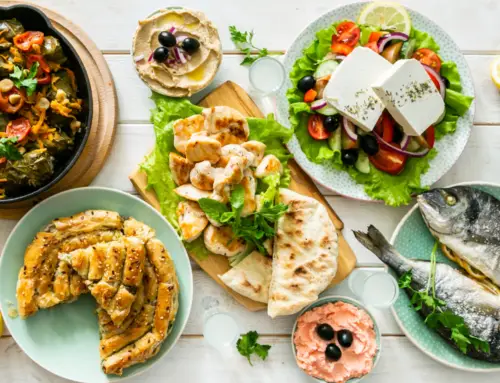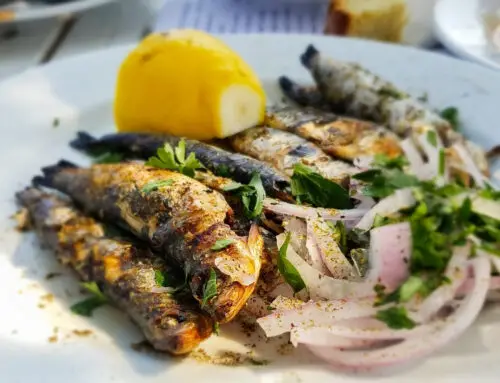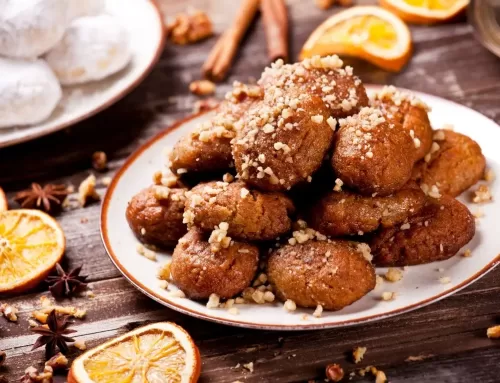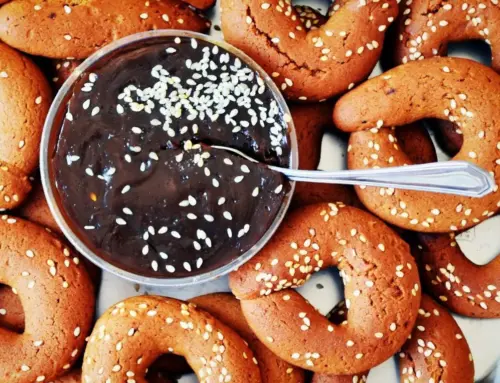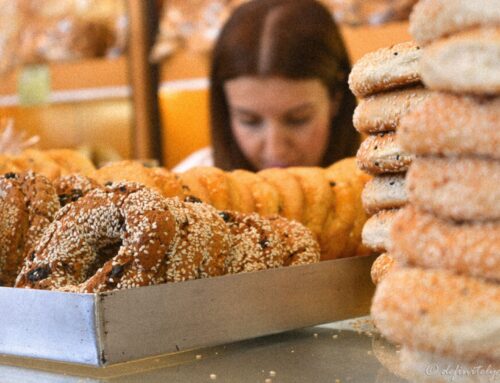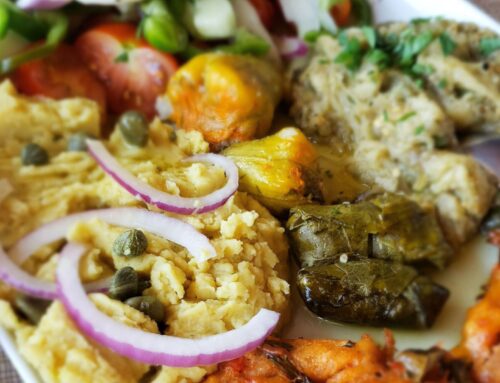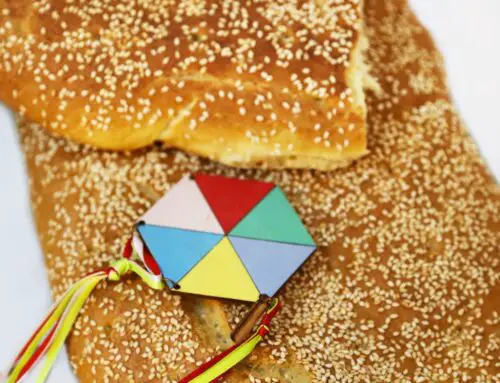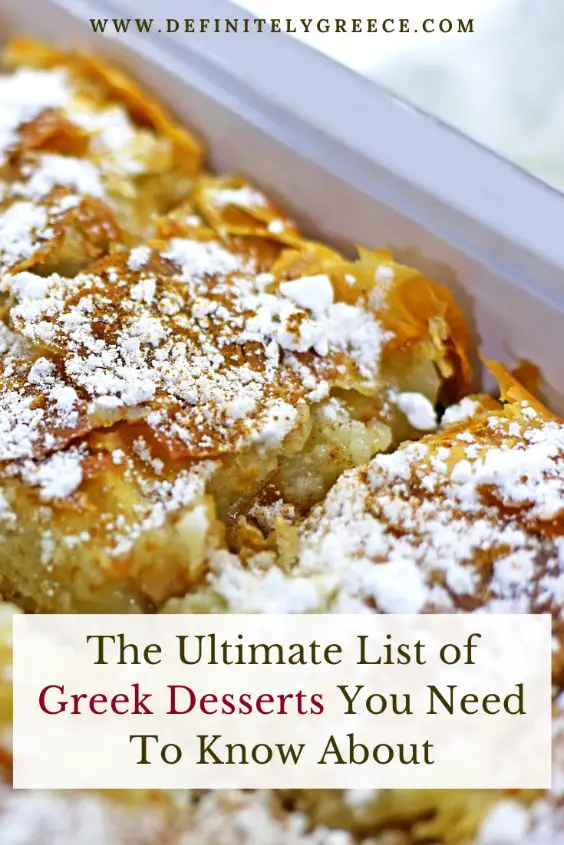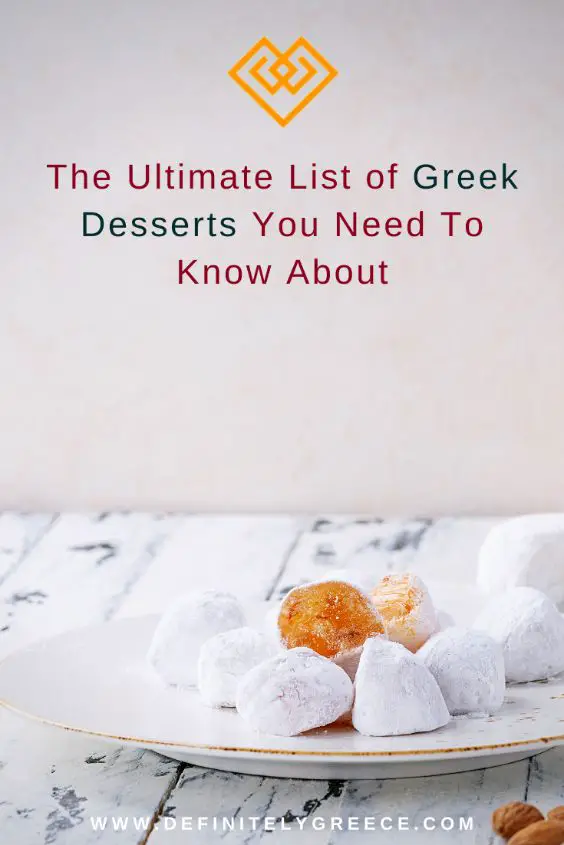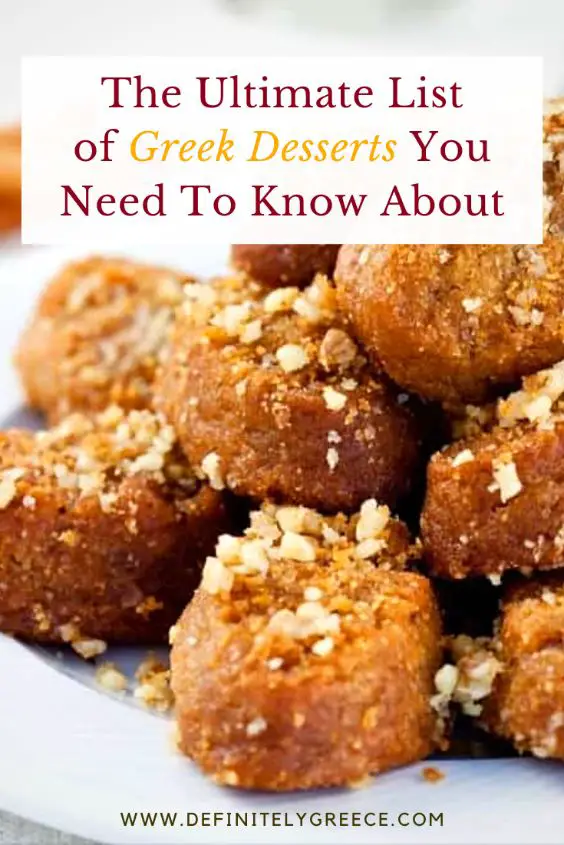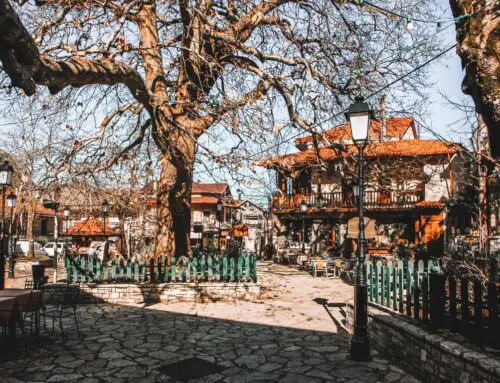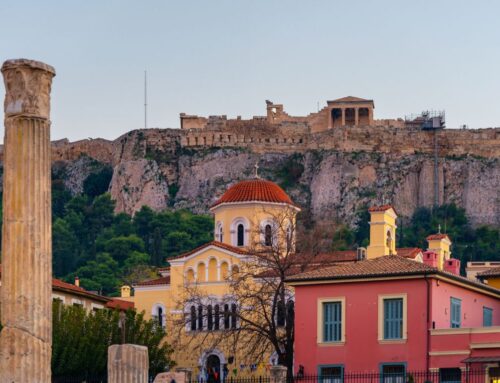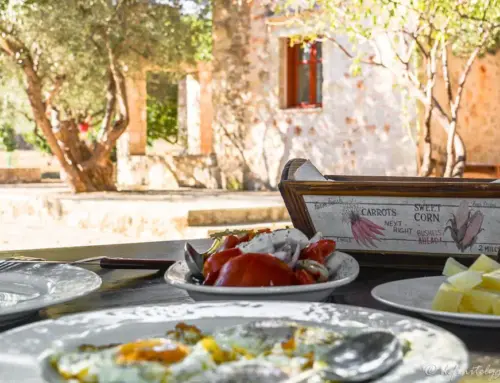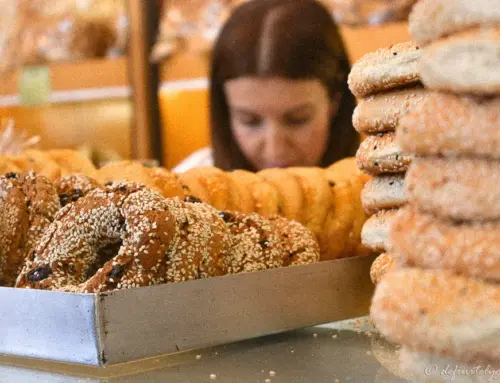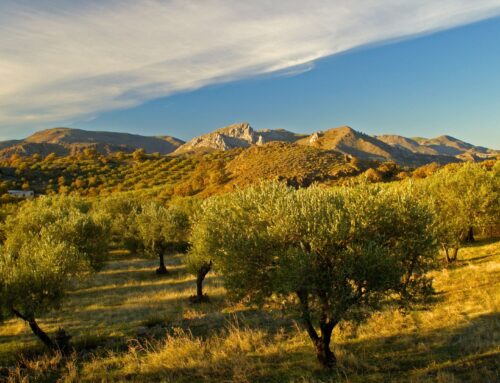The Ultimate List of Greek Desserts You Need To Know About
The Ultimate List of Greek Desserts You Need To Know About
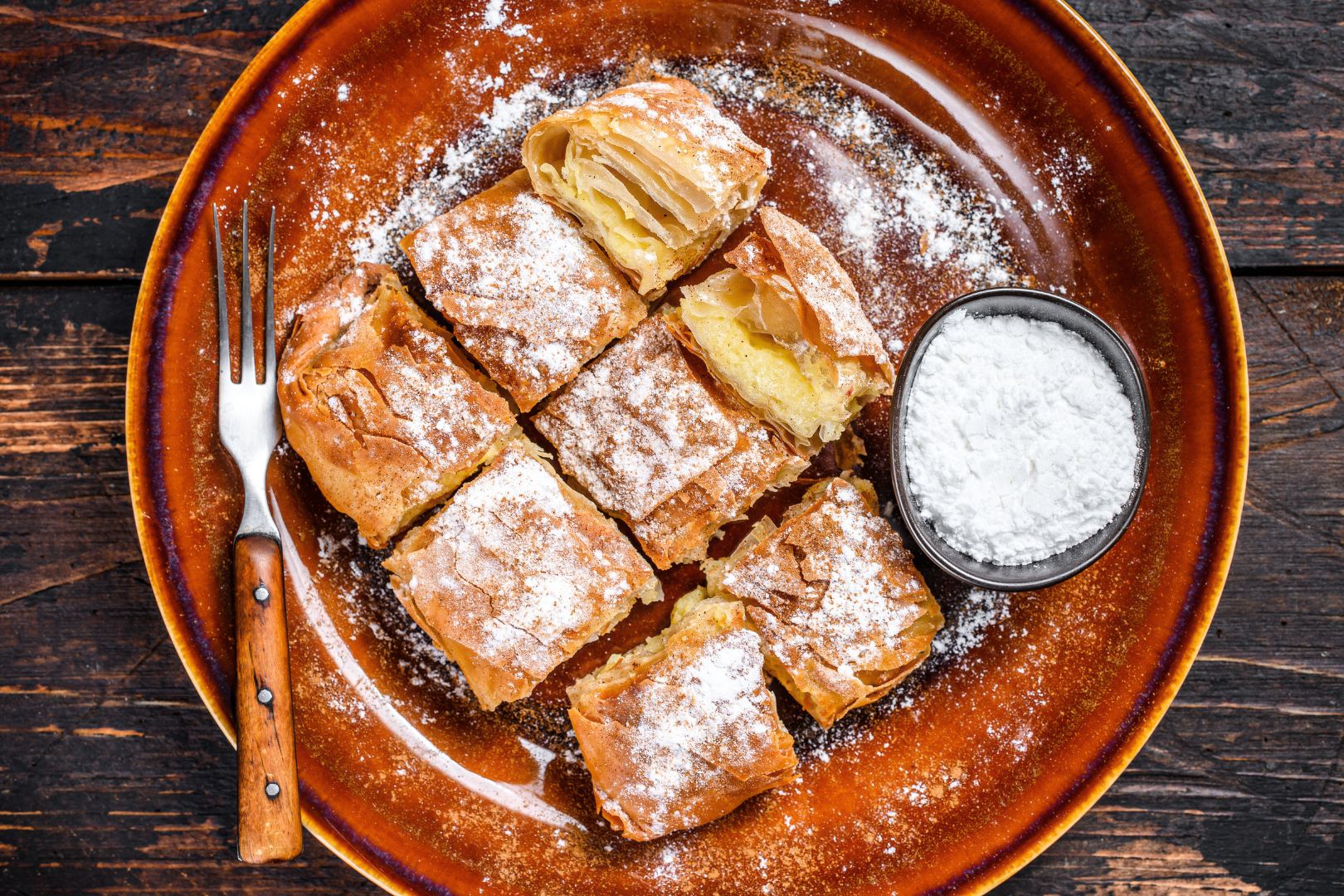
☞ Table of Contents:
How does one even begin to compile a list of Greek desserts and why is it important? When we talk about Greek desserts or any dessert and any food, we are talking about the relationship between food, culture and society.
The food we eat is part of our identity, defining the way we interact and mapping the history, cultural changes and practices of society. Now, if we consider the fact that Greece is the oldest country in Europe and one of the oldest in the world, it is clear that tracing the origins of these foods is not always clear-cut.
This list of Greek desserts is not absolute. Just like all other traditions the things we enjoy eating can shift and change over time. Here you will find both traditional Greek desserts whose recipes have been passed down from one generation to the next and more modern desserts that have become popular in recent years.
You will also find a list of Greek desserts from all the major categories of Greek desserts: syrupy, cakes, cookies and all the Greek pastry types.
Some of these Greek desserts have regional variations, with different names, flavours or meanings associated with them. You will also find more about Greek desserts that are linked to certain Christian holidays like Christmas or Easter.
Whether you are travelling to Greece for the first time or are already familiar with the Greek cuisine, you will be able to find and taste most of these desserts in bakeries and patisserie shops around the country or Greek delicatessens in your city.
Now, let’s begin exploring our ultimate list of Greek desserts!
Greek Pastry Types
A standard definition of pastry is “dough paste made with flour and fat”. However, just to make things a bit more complicated pastries are not always necessarily sweet. That makes sense if you think that for thousands of years, sugar was not a common ingredient in our kitchens.
Pastries can range from “spinach pie” to “brioche” and “apple strudel”.
When we talk about cakes, we tend to mean baked goods made with leaveners, flour, fat, and sugar. If this sounds very similar to pastries you are not wrong.
Some cakes start out as pastries, and some are turned into pastries. However, not all pastries are cakes.
To make matters worse, different countries have become accustomed to using these words to describe different kinds of items.
The ‘what is a cake and what is a pastry?’ debate is a fascinating and confusing labyrinth that I suggest you start Googling only if you have some time to spend utterly confused.
To differentiate between other categories this list will not include syrup-laced pastries.
There are many different kinds of pastries but the most common pastry in Greece is without a doubt the “filo pastry”. It works amazingly with most sweet and savoury dishes and used to be made by hand even though nowadays people may buy it already made.
Bougatsa
One of the most popular pastry desserts in Greece is “bougatsa”.
It is made from multiple stacked layers of filo (or phyllo) pastry and is eaten during breakfast.
The filling that is protected by layers of crunchy filo is usually semolina custard, cheese, spinach or mince. The original version and the one most people seek to experience is the custard option. Semolina custard is a frequent guest in Greek desserts as you will soon find out!
Once baked it is cut in small pieces and dusted with a heavy layer of icing sugar and cinnamon. Bougatsa is very popular in Northern Greece but can be found in other places around the country as well.
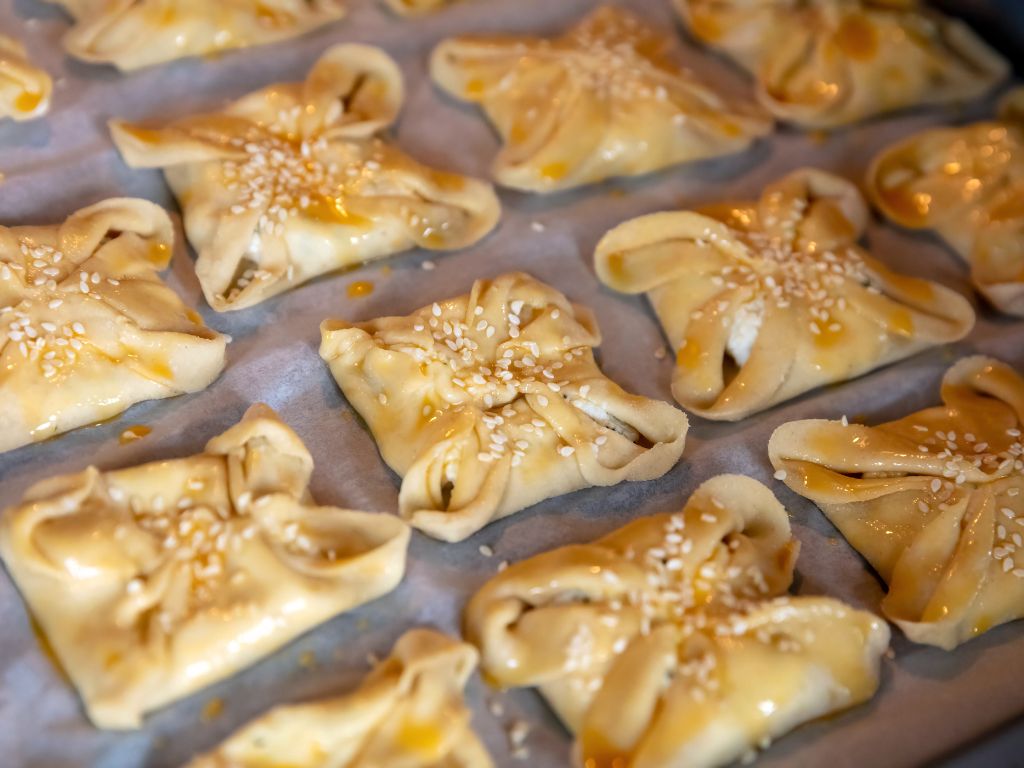

Kalitsounia or Kaltsounia
These sweet cheese pastries are mostly associated with the island of Crete. They appear just like normal mini cheese pies but come in different flavours depending on the region and preferences of the individual.
Just like with our bougatsa, these pastries can be both a dessert and a savoury treat. The sweet kalitsounia have the local mizithra cheese filling and are usually served soaked in honey and cinnamon.
The soft Cretan mizithra used for the filling is similar to ricotta or cottage cheese and has a characteristic sweet taste that combined with cinnamon and honey create a wholesome and unique flavour.
The saltier mizithra is used for savoury dishes.
You will find kalitsounia in most bakery shops around Crete or you can just ask for the “sweet cheese pies”.
Skaltsounia
Add an “s” and you get a similar but oh, so different recipe.
These sweet pastries filled with nuts and dried fruits are very popular in the islands of the Cyclades in general and they are usually served during the Christmas and Easter period because they lack dairy products.
During the long fasting weeks, animals products and dairy should not be consumed, so a whole category of desserts called “nistisima” has as a result been created over the years.
These sweet pastries make use of herbs and spices as well as honey, orange zest and sesame, to offer a sweet and sin-free option.
Tsoureki
Tsoureki is a type of sweet bread that usually brings to mind the Easter celebrations.
The perfect tsoureki is supposed to be soft and fluffy with a stringy texture that comes apart when you tear it, and a beautiful brown crust on the outside. The flavours vary according to region but you should expect bold aromatic spices like mastiha and mahleb (mahlepi).
Most families will start their tsoureki making operations on Good Thursday, so they can be ready and waiting to be consumed on the night of Holy Saturday after church.
Tsoureki also makes a guest appearance during other holidays like Christmas and New Years but that depends on the family and region.
☞ Related: The Greek Christmas Food You Need to Try
Pastes and Pastakia
These are not necessarily Greece-exclusive but they are some of the most common desserts in Greece, especially as a house gift so they deserve a spot on this list of Greek desserts.
Pastakia (meaning little pastas) can be found in every patisserie shop or zaharoplasteio in the country. The standard set-up includes the soft sponge cake and whipped cream, plus chocolate, caramel, fruits or any other flavour combination. You can find tiramisu pastakia, black forest pastakia and cream and cookies pastakia.
Syrup-laden Greek Desserts
This is my favourite category of Greek desserts.
While it includes the most well-known Greek dessert of all time, the much fought over baklava, I seriously doubt whether people could name another dessert on this list without looking first!
Siropiasta are moist, juicy and soaking in flavour.
These desserts can be enjoyed on their own as well as with a bit of Greek yoghurt or vanilla ice cream.
For an extra Greek dessert, considering serving your “ravani”, “ekmek kataifi” or “karidopita” with a scoop of kaimaki ice cream.
Also known as dondurma, this stretchy aromatic ice cream takes its form and flavour from two key ingredients, mastic and salepi.
You will find shalep or salepi in Middle Eastern or Turkish shops as well as in spice markets or supermarkets around Greece. Due to this ingredient, the ice cream takes on a stretchy consistency and becomes resistant to melting or freezing all the way through.
Mastiha is a spice that comes from the resin of a specific tree that can only be found on the island of Chios. It is a unique and protected Greek product that is also frequently added to tsourekia. You can also find it in natural gum sold all around Greece with the name “Mastiha Chiou”.
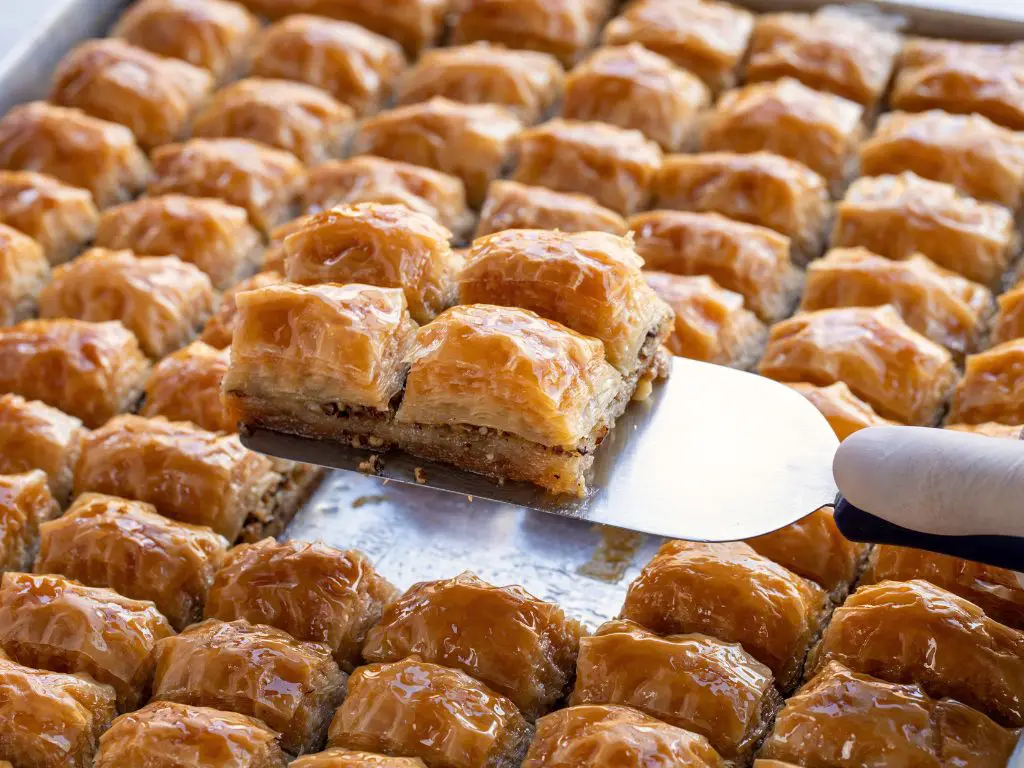

Baklava
Arguably the most famous Greek dessert and the reason for many fights between different countries in the Middle East and the Balkans.
While the origin of this dessert is a controversial discussion subject and the “conflict” once escalated all the way to the courts of Brussels, everyone can agree that it is a scrumptious delicacy and multiple regional variations can be found around the Balkans and the Middle East.
Turkey holds protected status for their Gaziantep baklava also known as Antep Baklavasi, which is much lighter on the syrup and heavier on the pistachio compared to Greek versions.
Whether you have baklava in Greece, extra syrupy and walnuty, Turkey, with pistachio and a beautiful crunch, or Lebanon, where butter is king, there is no denying the popularity of this dessert.
You may just need to taste all the versions to decide on your own!
Kantaifi
(Kadayfi, Kadaifi, Kataifi, Kadayifi or any other way that it can be written)
This dessert belongs in the baklava family and according to some (ahem, me), it is even better than the aforementioned popular delicacy.
Both desserts are similar in terms of the fillings, phyllo and sugar combinations that vary according to region and country. Yes, kantaifi is also found around the Balkans, Greece, Turkey and the Middle East.
The main difference is that phyllo in kantaifi is shredded and resembles angel hair pasta rather than the sheets used in baklava.
In between this tangle of crispy and sugary phyllo you will find chopped walnuts, almonds or pistachios.
Portokalopita (Orange Pie)
Just in case you wanted something that pays more attention to oranges, the “portokalopita” or “orange pie” is the Greek dessert you didn’t know you needed.
It can be compared to the galaktoboureko, the ravani but with yoghurt or the giaourtopita plus the oranges.
You will have no trouble finding a slice of portokalopita at most Greek bakeries, but it is such a simple and easy dessert to make, you might want to give this a try at home first!
Karidopita (Walnut Pie)
This mouthwatering Greek dessert is a combination of “karidia” (walnuts) and syrup. There are multiple regional variations with the dominant flavours being that of cinnamon, ground cloves, orange zest and cognac or spiced rum.
It is best served with some Greek yoghurt or a scoop of kaimaki ice cream.
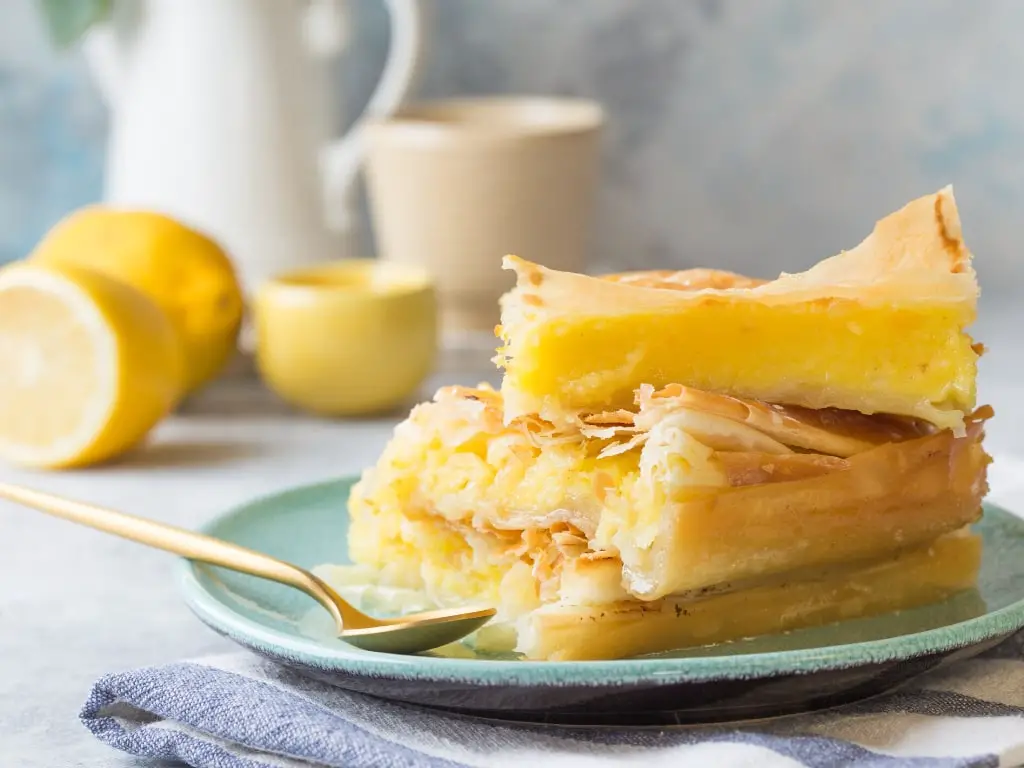

Galaktoboureko
Our good friend Nelly describes “galaktoboureko” as “the king” that has it all: phyllo, custard and syrup.
When the custard cream is at the perfect consistency and the phyllo is crunchy yet soaking in warm syrup then the three flavours can become one and your mouth becomes witness to a unique and passionate coupling.
Revani or Ravani
Another timeless Greek dessert is the ravani, also known as revani in some regions of Greece, the Balkans and the Middle East.
A combination of semolina, eggs, and sweet syrup with hints of lemon, cinnamon, orange and sometimes coconut, this is one mouthwatering and refreshing dessert that you will not be able to stop eating.
Ekmek Kantaifi
What could make kantaifi even better? A layer of custard and whipped cream of course!
The gastronomically inclined may be able to pick up the faint traces of lemon, rosewater or mastiha, the unique resin found on the island of Chios.
This irresistible dessert is heightened by the combination of flavours and textures and should be consumed fresh, with a heavy sprinkling of chopped nuts and cinnamon on top.
Diples
This sweet and syrupy dessert takes its name from the “folds” that the dough is shaped in before it is fried and topped with honey syrup and chopped nuts.
Diples are known by many different names around Europe and are common during celebrations and fasting periods, especially before Easter.
You might know them as “Angel Wings” but they are also called “Crostoli” “Sfrappe” or “Chiacchiere” in Italy, depending on the region, “Minciunele” in Romania and “Žagarėliai” in Lithuania.
The Greek recipe does not include sour cream and will almost always be served “wet” that is dipped in some sort of honey syrup, instead of dry or with powdered sugar.
Toulouba & Touloubaki
Toulouba or the smaller bite-sized touloubakia is another Greek dessert that proves how varied fried dough and syrup can be.
The name derives from the Turkish ‘pump’ and the Italian ‘tromba’ and by now you wouldn’t be surprised to find out that they feature in Turkish, Armenian, Albanian, Bulgarian, Azerbaijani and Greek cuisines amongst others.
Touloubakia can get incredibly sweet, so a little goes a long way and should be accompanied by a cold glass of water.
A simple dessert that is best eaten when fresh and crispy on the outside and juicy on the inside.
Kourkoubinia
Kourkoubinia are the answer to those that love baklava but would prefer to skip the nuts.
These are small and round pieces of crispy phyllo dough that are rolled then fried and drizzled with syrup. So fast and simple.
The next time there is a bit of leftover dough you will know what to make!
Samali
One of the less popular syrup desserts is the samali, pronounced with the accent on the first syllable.
This sweet concoction is a result of semolina flour, Greek yoghurt and syrup together with the unique aroma of mastiha, a product that can only be sourced on the Greek island of Chios.
While there are no eggs or fat in this texture, the full-fat and very well-drained Greek yoghurt keeps it moist in the inside and crunchy on the outside, just like intended.
For a good end result, you will need to let your samali rest for a few hours before baking it. That helps the semolina grains absorb as much of the flavorful liquid ingredients as possible.
Trigona Panoramatos
Trigona stands for “triangles” which will make sense the moment you lay eyes on these multilayered pockets of creamy custard and crispy phyllo.
The second part of the name, “Panorama” reveals the origin of this dessert, an area in the city of Thessaloniki offering great views and home to the original creators, Elenidis Patisserie.
While many patisserie shops can offer you a taste of this Greek dessert, it would be a mistake to visit Thessaloniki without a stop at the original store.
Roxakia
Can you have too many syrupy desserts? We didn’t think so!
Roxakia are made of vanilla and chocolate dough, rolled together then cut into small bite-sized pieces and baked until golden brown. These quite hard little biscuits are then put into a syrup bath, where they are left to soak for a few hours until they are ready to be consumed.
The combination of chocolate and vanilla make roxakia a favourite for some people and I couldn’t agree more!
Greek Pies and Tarts
Whenever you see the ending “-pita” you can be almost certain we are talking about a pie/tart creation.
While foreigners may be more familiar with the word pita being used as the bread that envelopes their souvlaki, chips and tzatziki wrap, in Greece, it can also be used to refer to dough stuffed with a filling that is cooked in the oven.
The most well-known pita is not a dessert but the beloved “spanakopita”. But fear not, there are as many types of pitas as there are villages in Greece, so you are bound to come across one you enjoy.
Galatopita or Milk Pie
This is one of the most common desserts in mainland Greece and the northern parts of the country that is primarily phyllo, milk and semolina custard. It can be loosely described as a much larger and fluffier bougatsa.
The perfect galatopita requires a bit of lemon and cinnamon and just the right amount of sugar at the bottom so that it stays fresh and keeps its form when served. It can be made with or without the phyllo at the bottom, which should also be kept light, with 2-3 sheets at most.
Giaourtopita (Greek Yogurt Pie)
This is a dessert that cannot be easily categorized. It is a pie and a cake at the same time and can be made with or without the syrup. What is certain is that it is one of the easiest Greek desserts to whip up, requiring good Greek yoghurt and rich cow’s milk butter.
When it doesn’t take a syrup bath at the end, it is best served with a dollop of yoghurt on top and a drizzle of a traditional spoon sweet (gliko tou koutaliou).
Kolokithopita Glikia (Sweet Pumpikin Pie)
The Greek pumpkin pie has almost nothing in common with the American version other than the key ingredient that is and the fact that both of them are delicious.
To make a sweet pumpkin pie à la Greece you will need a pumpkin, at least 4-5 layers of phyllo and sugar, as well as raisins, walnuts, cinnamon, sesame, and cloves depending on your preference.
Misc List of Greek Desserts
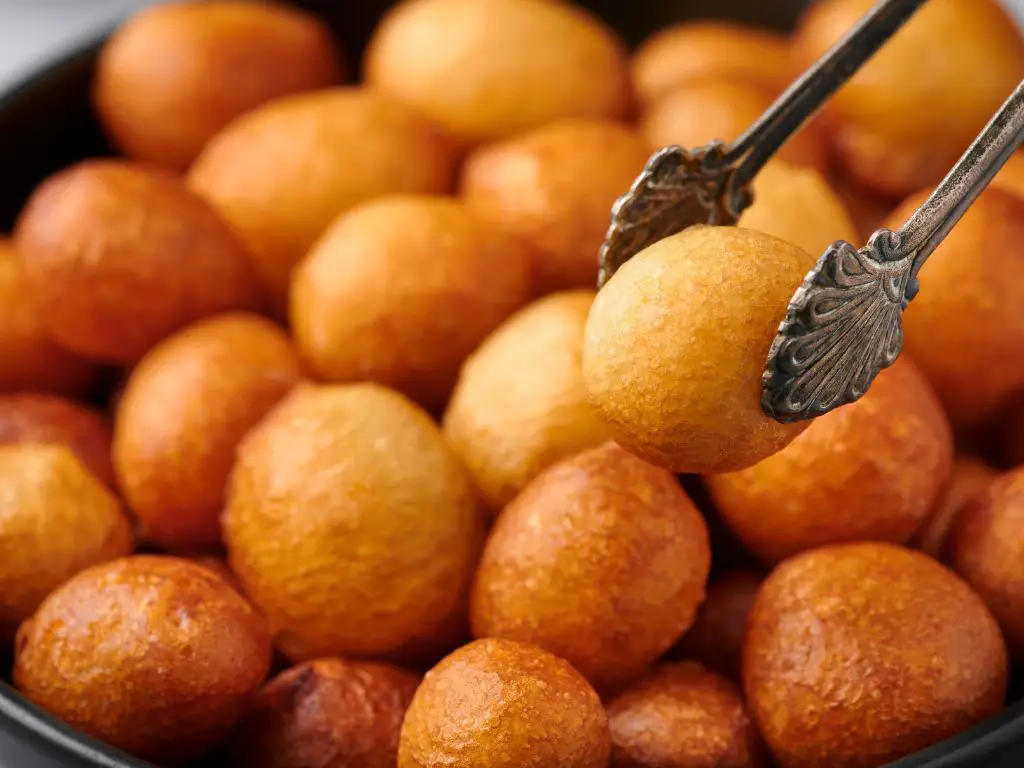

Loukoumades and Loukoumas
Loukoumades are best explained as “Greek doughnuts”. They are simple, easy and irresistible, being only fried dough and syrup (or sugar). The classic “loukoumades” are small and round, deep-fried in oil and then sprinkled with honey, sugar, cinnamon, nuts, fruits or a combination of other flavours.
You will find loukoumades all around Greece but one place you should make an effort to see is the aptly called “Lukumades” in Athens. Opened in 2013, with multiple customer service awards, this is one place that has become THE place for dessert in Athens. Any flavour combination you can think of is possible here!
The “loukoumas” is one big doughnut with a hole in the middle. You most likely will find it (or rather hear it) during the summer, when street vendors take to the beach shouting “loukoumaaas, fresh loukoumaaaas”.
This version is soft on the inside and crunchy on the outside, covered entirely in white sugar. A kid favourite for sure!
Halva (with semolina or tahini)
There are actually two popular types of halva found in Greece. The first is soft and syrupy with flavours of cinnamon and clove that is made with semolina. It is usually consumed during periods of fasting when Greek Orthodoxs are unable to eat dairy or meat.
The second kind is much drier and crumbly and is made from tahini.
Both versions are popular in Greece, the Balkans, the Middle East and parts of Asia and can include different nut butters and spices.
☞ Related: Sweet Escape: The 6 Best Places to Get Dessert in Athens
Kormos (also known as Mosaiko)
This is a very simple and irresistible dessert that can be translated to “tree log” due to its long and narrow shape. You can also find it as ‘mosaiko’ from the mosaic like patterns that are revealed once you cut it.
Strictly speaking it is not a Greek dessert but it is widely popular and easily found around the country. With only a few ingredients required, no baking and plenty of chocolate, this is the go-to dessert when you are in a rush or after a dessert that can please adults and children alike.
The taste of the chocolate and biscuits can be enhanced with liqueur, vanilla or even fruits like raspberry.
Pasteli
These sesame and honey bars are the original energy snack and people tend to either love or hate them. You can find them all around Greece, in supermarkets and kiosks (periptera) but you can also make your own version at home very easily.
Sesame and nuts might not be everyone’s definition of a dessert, but these crunchy treats are a healthy alternative packed with antioxidants, proteins and healthy oils and a great source of iron and calcium.
You will also find pasteli bars that are heavy on certain nuts, like almond pasteli and pistachio pasteli. They are most often consumed during periods of fasting when most people abstain from meat and dairy products.
For a vegan option you can swap the honey for agave nectar, maple or date syrup for a bee-free alternative.
☞ Related: Greek Alcohol – The 5 Drinks You Need to Try
Lalagia
Lalagia are classic and traditional treats from the Peloponnese region of Greece and especially Messinia that you will find in every bakery, though they might be harder to find in other places of Greece.
They make an excellent sweet or savoury snack or meal since once you start eating them it is impossible to stop.
The dough is a combination of flour, olive oil, salt and yeast that needs to rest for a few hours before it is shaped in long snake-like rolls that are deep fried in vegetable oil.
The olive oil in the dough makes all the difference, giving them a crunchy and light texture. To finish, you can sprinkle them with sugar and cinnamon or eat with feta cheese and olives. There is no wrong way when it comes to lalagia!
Fanouropita
This is a traditional Greek dessert that is heavily linked to Greek Orthodoxy and the feast day of Saint Fanourios, the patron saint of Rhodes, that is celebrated on the 27th of August.
Fanouropita traditionally only contains 7 key ingredients, equal to the number of ‘mysteries’ in the Greek Orthodox Church. In different regions, however, this number is expanded to nine that is linked to the nine orders of angels. The key ingredients are olive oil, orange juice, flour, baking powder, cinnamon, raisins and powdered sugar.
The small and round cake is brought to church on the feast day of the 27th of August during Vespers and blessed by the the priest.
Vasilopita
Another Greek cake that is linked to a religious celebration is the Vasilopita or Saint Basil’s Cake.
Saint Basil of Caesarea was a bishop that lived in 330 AD that is most notably remember for his charity towards the poor and the underprivileged, especially children.
His feast day is celebrated on January the 1st and he is the original Santa Claus figure in Greece.
On the night before New Year’s Day, families will prepare the vasilopita and hide a coin or trinket within the dough before baking it. At midnight, the pie is then cut in pieces, making sure to put aside a slice for Saint Basil, the Lord, the poor, the house, other saints or family members that cannot be present. The person who finds the coin is said to have good luck for the rest of the year.
Schools, sports clubs, workplaces, companies and institutions will almost always have a “Cutting of the Vasilopita” day as well, sometime in January or February when all the people have returned from their holidays. In those instances, the “coin” most often will represent another financial prize or gift that is given to the lucky person that finds it.


Melomakarona
The melomakarono is a Greek dessert that does not apply itself well to categories. It can be considered a syrup dessert, but it is also often called a ‘honey cookie’ and it is another Greek dessert heavily linked to the Christmas and New Year celebrations.
Made from a mix of semolina flour, oil and walnuts, these orange and brandy flavoured cookies, are bathed in sweet honey syrup before they are topped with an extra layer of crunchy walnuts.
You can find them in most stores during the Christmas period as well as their modern chocolate-covered variation, that is just as satisfying.
Kourabiedes
Kourabiedes and melomakarona are the Christmas duo that every festive dinner table needs to have. They compliment and balance each other out perfectly so that you are never dessert-free during the five weeks of December and January celebrations.
Melomakarona are the Greek honey cookies and kourabiedes are the almond and butter cookies covered in powdered sugar.
Fluffy, crunchy, buttery and quite messy to eat, kourabiedes are an improved version of shortbread that in addition to Christmas is also prepared during special occasions and weddings and baptisms.
Koulourakia
Koulourakia is quite a broad name that covers most Greek cookies, but it is most often used when referring to the orange and vanilla flavoured cookies that are eaten during Easter.
Simple, fluffy and crunchy, these Greek Easter cookies are quite easy to make and surprisingly addictive. The dough is rolled into braids, boats, or simple ‘S’ shapes, and eaten from morning till night until every single one of them is finished.
They are the perfect little treat for a cup of coffee or hot chocolate.
Ergolavi
These Greek almond cookies are soft and chewy like a French macaroon and require only a handful of ingredients, while they pack a lot of flavour and are children favourites. It is best to enjoy these straight after baking or the next day, since they do tend to go hard quite fast.
They are great with a cup of tea, a spoon of sweet jam or on their own. Ergolavi are popular treats during special occasions like baptisms and birthdays.
Kariokes
Kariokes are the ultimate chocolate treat, yet can be easily turned into a vegan or dairy free dessert, especially during the fasting period.
They are also a good option when you have leftover cake and wanting to transform it into a chocolate laden treat for the whole family. You will need real chocolate, nuts, biscuits, butter, cinnamon, honey, your choice of liqueur and fragrant vanilla.
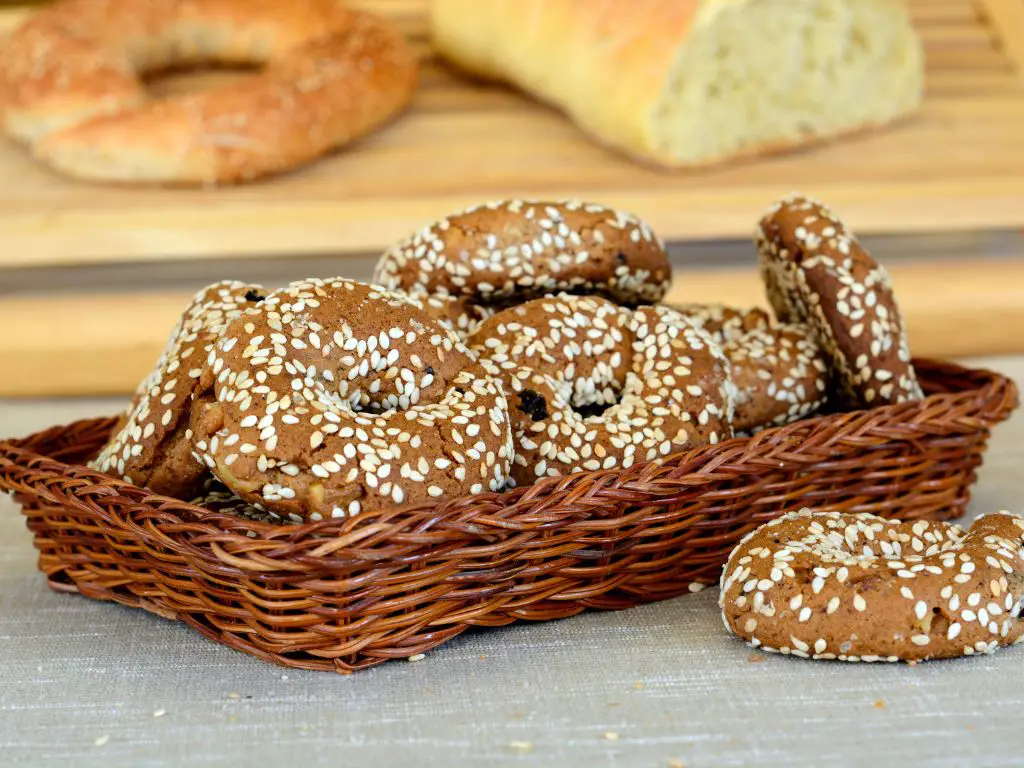

Moustokouloura
These hard to pronounce cookies have one very special and key ingredient, grape molasses.
While it doesn’t sound like the tastier treat there is, these tasty and incredibly healthy cookies are soft, chewy and fragrant. Some of the dominating aromas come from cinnamon, cloves, brandy and orange. While you can find them year-round in Greece and easily make them at home if you can get your hands on some “petimezi”, you will not be able to avoid them during the wine harvest season in early September and October.
Spoon Sweets
Spoon sweets are a category of their own when it comes to Greek desserts. They are fruit preserves, typically homemade and served as a treat when a guest visits you at home.
They are called spoon sweets because of the way they are served, a small delicate plate with a dainty spoon and a tall glass of water, that is necessary due to the sweetness.
You will find spoon sweets made with grapes, bergamont, apple, pear, fig, cherry, orange, lemon, prunes, quince and even cherry tomatoes, while certain nuts and flower petals can also be used.
List of Greek Desserts – Conclusion
If there is one thing that this list of Greek desserts has made abundantly clear is that for sweets lovers, there is incredibly diversity.
Whether you choose to enrich your taste buds with a syrupy Greek dessert, have a classic loukouma or explore the world of Christmas and seasonal Greek desserts, you will never be without an option for an after dinner treat.
Rania grew up in Thessaloniki and after some years of travelling around the globe has now settled down in Auckland, New Zealand. When she’s not studying to complete her undergraduate degree she’s either reading, writing or exploring the outdoors.
She loves going on mini adventures, whether it is an impromptu road trip, exploring her local op shops and antique shops or going on multi-day hikes. She is interested in photography and strongly believes that feta should be consumed with every meal.
She also thinks Greece is the best holiday destination and invites anyone that thinks otherwise to prove her wrong.
*Disclaimer: This page includes affiliate links. If you decide to book something through one of them, I might get a little bonus, but it won't cost you anything extra.*

